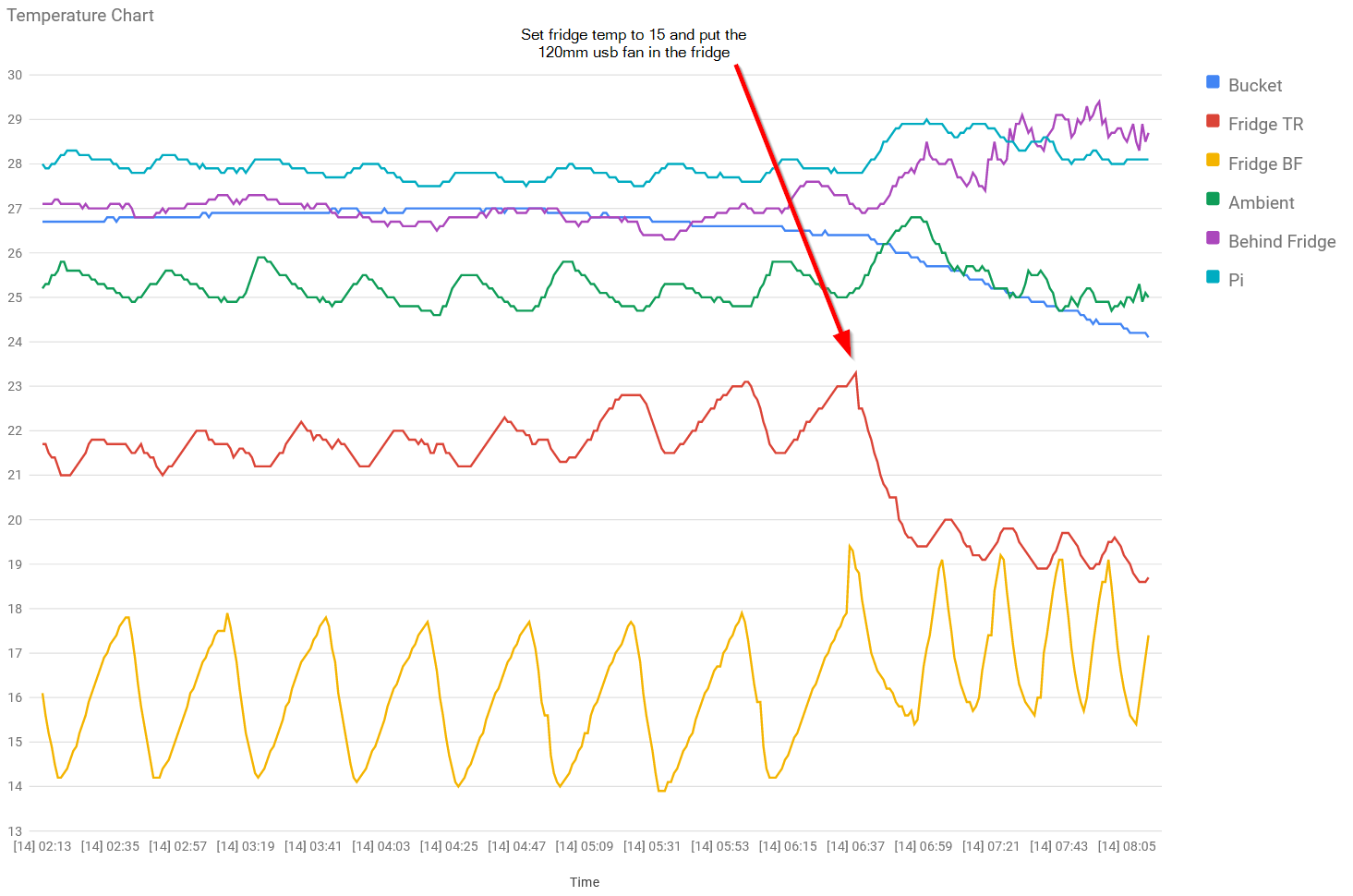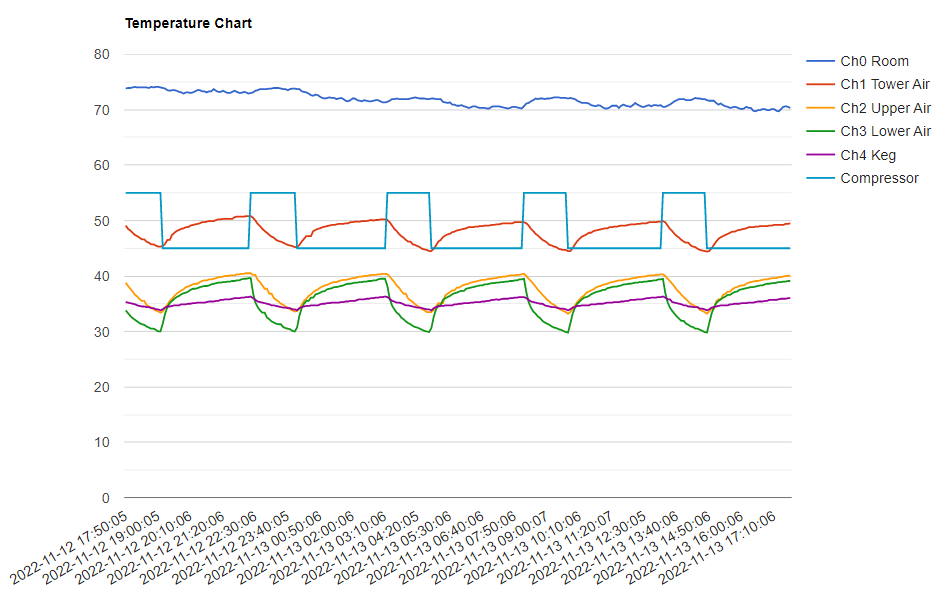I have modified the code and would be happy to contribute it back to the original author or others if desired? I have modified it so that it will automatically deal with 1 to 8 temperature sensors with relatively minor changes to the code. Plug another sensor in and you only need to add the sensor ID to the monitor code for it to start logging and add a user friendly name to the webui code for it to display it (it will display immediately, but without a user-friendly name). I also tidied up the tabular data HTML at the bottom, using style sheets instead of the nbsp padding. Example of the table data is in the image attached. If you add a new sensor, it will automatically display in a new column to the right of the three columns n that screen shot.
I changed it to Celcius, but you only need to set a variable in the monitor code file, and the webui code to change between Fahrenheit and Celcius.
I just did it today so the code is not super polished and tested yet.
Greetings, @Megapint ! And welcome to the forum!
I had missed your earlier posts, but having read them now I'm quite amazed and pleased that someone would even deal with that rats nest of mine.
Clearly, I'm not a coder
When you're happy with your changes if you could put the files somewhere I could pull from, that would be most excellent!
Cheers!






